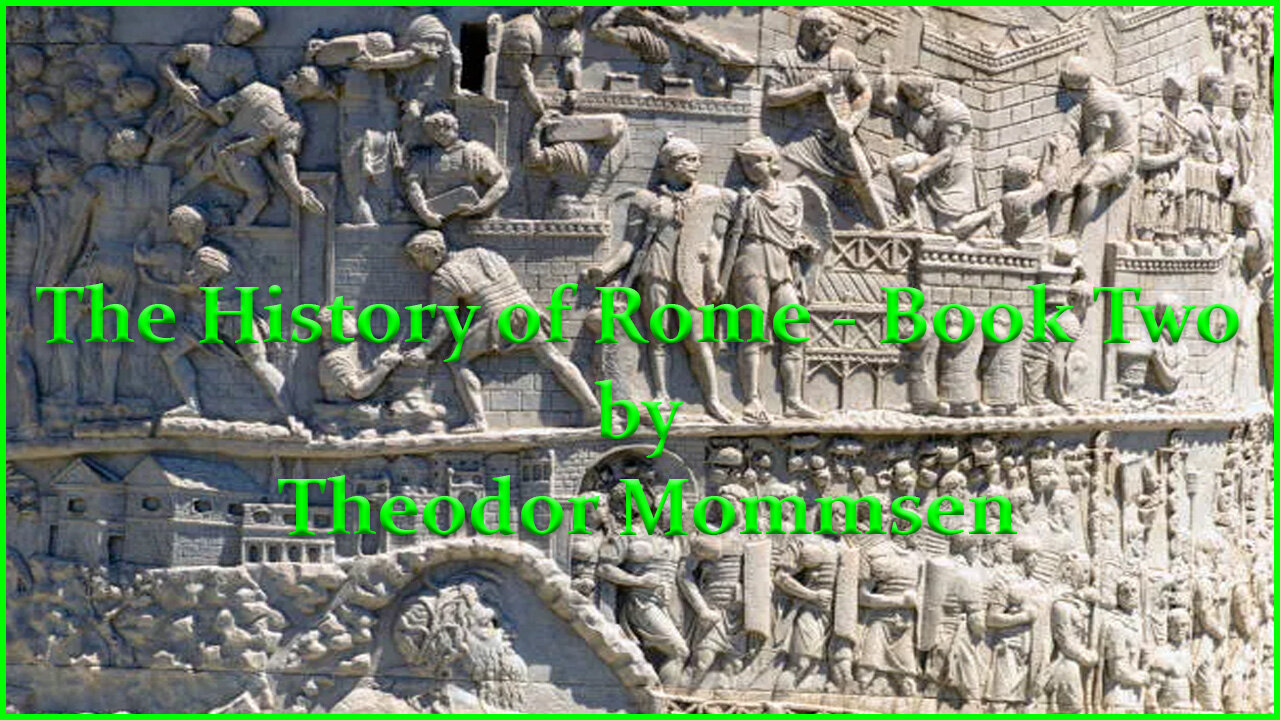Premium Only Content

'The History of Rome' - Book Two (1855) by Theodor Mommsen
In 'The History of Rome' - Book Two - 'From the Abolition of the Monarchy in Rome to the Union of Italy', Theodor Mommsen continues his monumental chronicle of Roman history with a penetrating examination of the early Republic’s internal consolidation and its outward expansion across the Italian peninsula. Written in the mid-19th century but resonating with remarkable modernity, this volume captures both the grandeur and the fragility of Rome’s ascent from a city-state to a regional hegemon.
Mommsen’s approach blends rigorous scholarship with vivid, almost literary storytelling. He navigates the complex terrain of early Roman institutions, class struggles, and military campaigns with clarity and conviction. One of the book’s most compelling themes is the tension between patricians and plebeians, a dynamic he portrays not merely as a political conflict but as a foundational struggle that shaped the Republic’s legal and social evolution. His discussion of the Licinian-Sextian laws and the slow democratization of the Republic is nuanced, showing how reform was always shadowed by elite resistance and compromise.
Where Mommsen truly excels is in his treatment of Rome’s wars against the Etruscans, Samnites, and other Italic peoples. He presents these campaigns not simply as acts of conquest but as essential tests of Roman discipline, adaptability, and strategic genius. His admiration for Roman statecraft is evident, though he does not shy away from critiquing its brutality or ambition.
Yet, the volume is not without its Victorian biases. Mommsen’s implicit comparisons between Rome and 19th-century Prussia, particularly in terms of legal order and martial virtue, occasionally color his interpretations. Still, his judgments are rarely simplistic; he seeks to understand rather than to glorify.
In summary, Book Two of 'The History of Rome' is a masterful continuation of Mommsen’s broader project. It combines erudition with narrative force, offering both the specialist and the interested reader a compelling portrait of Republican Rome in its formative century. It remains, even today, a cornerstone of classical historiography.
-
 1:30:18
1:30:18
Game On!
17 hours ago $2.77 earned2025 Sports Equinox Did NOT Disappoint!
18.5K1 -
 7:02
7:02
Adam Does Movies
19 hours ago $4.79 earnedIT: Welcome To Derry Episode 1 - Review
35.1K3 -
 9:05
9:05
Millionaire Mentor
16 hours agoTrump EXPOSES Obama and Biden LIVE As Jim Jordan Backs Him Up
26.8K8 -
 1:34
1:34
WildCreatures
1 day ago $4.17 earnedMajestic Spotted Eagle Rays Fly Past Scuba Diver in the Galapagos Islands
18K8 -
 2:05:15
2:05:15
BEK TV
1 day agoTrent Loos in the Morning - 10/28/2025
22.2K2 -
 32:13
32:13
Stephen Gardner
15 hours ago🔥Schumer SHUTDOWN Backfires as Trump CRUSHES Democrats!!
62.8K27 -
 30:24
30:24
Liberty Hangout
7 days agoNo Kings Protestors Go CRAZY: Part 1
57.8K82 -
 42:08
42:08
The Why Files
2 days agoLincoln Conspiracy: a Diary, a Mummy and The Escape of John Wilkes Booth
38.9K32 -
 24:42
24:42
James Klüg
3 days agoAnti-Trump Protester HITS Grandma Thinking She’s With Us
28.6K19 -
 2:18:46
2:18:46
Tucker Carlson
14 hours agoTucker Carlson Interviews Nick Fuentes
203K751